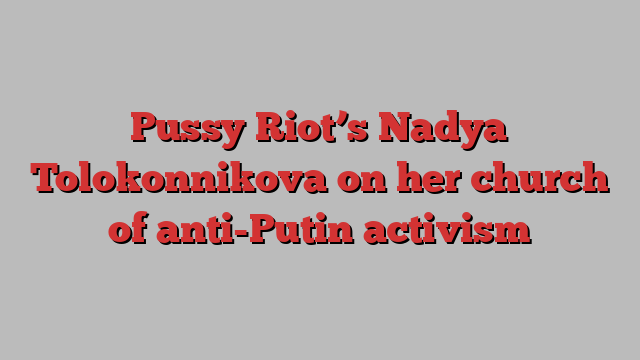
In 2012, Russian activist Nadya Tolokonnikova was sentenced to two years in prison for “hooliganism motivated by religious hatred” after her band Pussy Riot protested against Vladimir Putin’s regime with a guerrilla-style punk performance inside Moscow’s Cathedral of Christ the Saviour. Now she has built her own church.
Set inside the industrial walls of OK Linz, a contemporary art museum in northern Austria, Tolokonnikova’s version of a church embraces revolution and doesn’t shy away from female sexuality. Its colours are red and black, it makes liberal use of faux fur and velvet, and its leaders are women clad in lingerie and balaclavas.
Tolokonnikova’s first solo museum exhibition is titled simply Rage. In works old and new, she reflects on her fight to balance fear and anger with bravery and hope, employing motifs from the Eastern Orthodox Church, including iconography and organ music. They seem to ask: can violence be countered with softness? Can faith exist without religion? And can someone living in exile retain a piece of home?
“Faith has a very important place in my life, but not as part of any organised religion,” Tolokonnikova, 34, says as we walk through the exhibition, speaking in a mix of Russian and English. “I have to believe in some higher ideals to help me get through the terrible moments that an activist’s life brings over and over.”
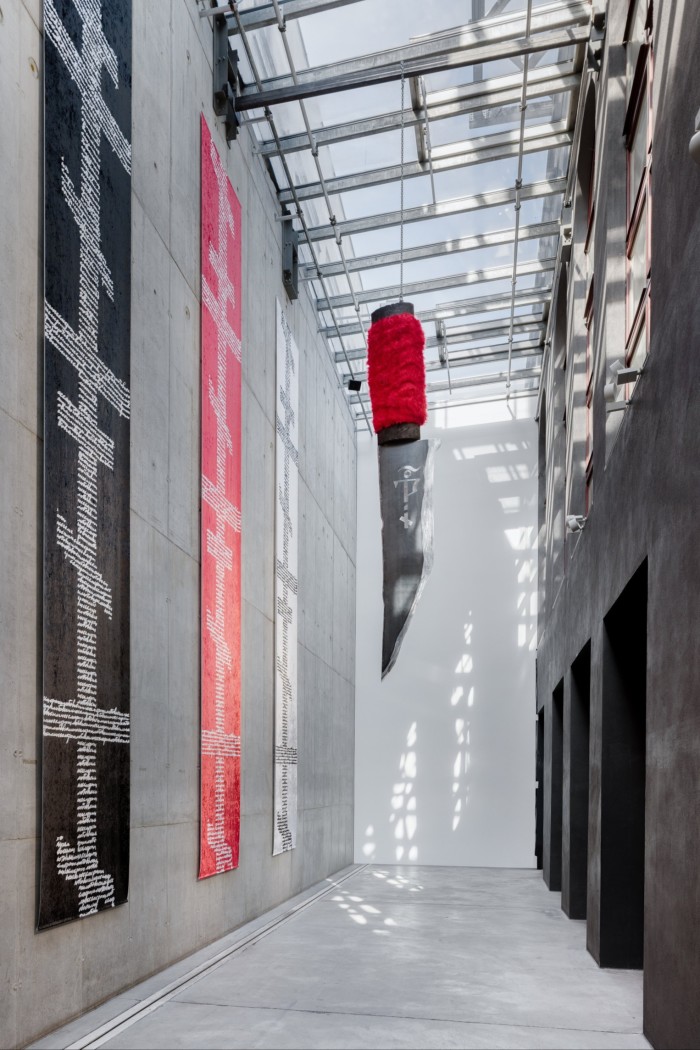
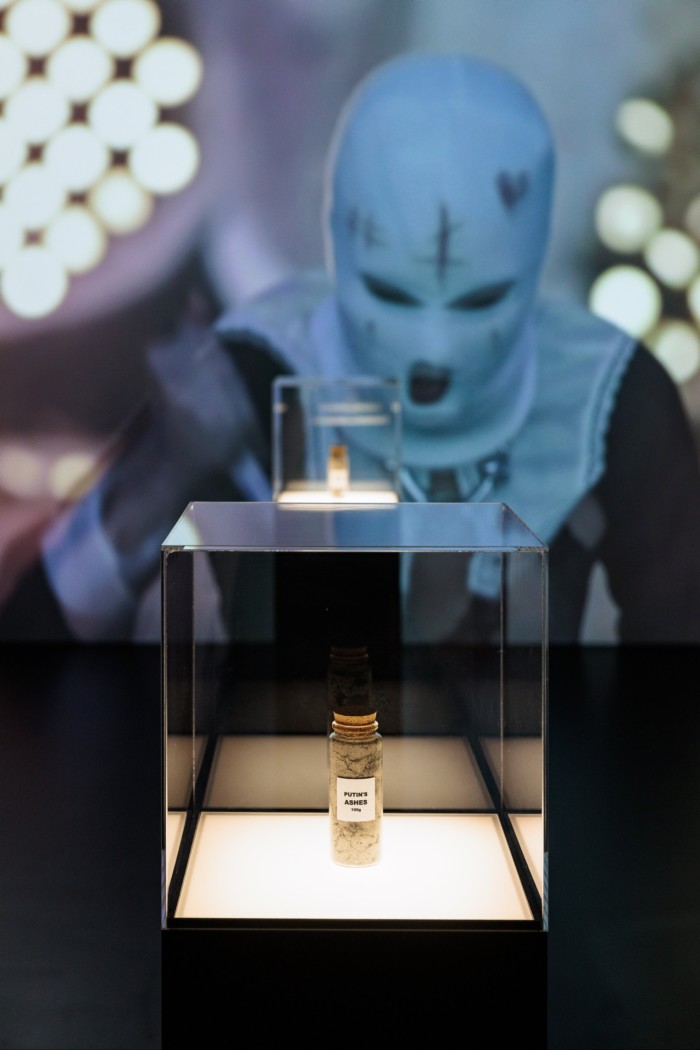
Since her release from prison in 2013, Tolokonnikova — who for personal safety reasons doesn’t disclose where she is currently based — has been keeping busy. She co-founded Mediazona, an independent news outlet in Russia, with fellow Pussy Riot member Maria Alyokhina; published a book, Read & Riot: A Pussy Riot Guide to Activism; raised $7mn to aid Ukraine after Putin’s invasion; and co-created the Pussy Riot mixtape Matriarchy Now.
Her continued activism resulted in her being branded a “foreign agent” in Russia in 2021, a category used to suppress opposition that has become something of a badge of honour among anti-Putin activists. Last year, her name was found on a list of people wanted by the Russian Interior Ministry.
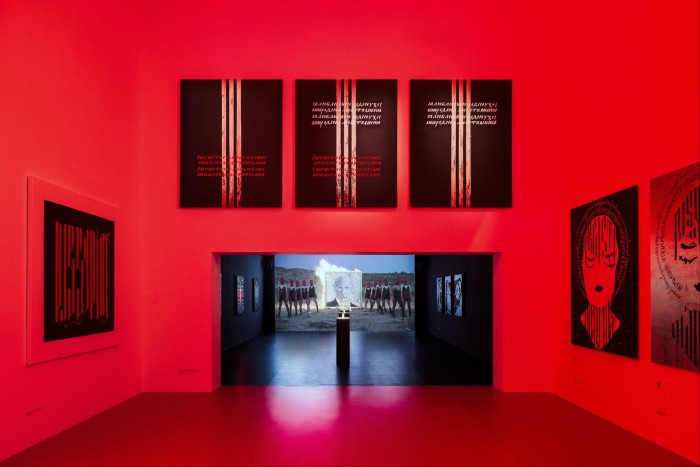
In 2022 she also created “Putin’s Ashes,” a video performance in which she and 11 other women dressed in short black dresses and fishnet tights burnt a portrait of Putin in an unspecified desert and collected the ashes in small glass bottles.
The work was shown at Jeffrey Deitch Gallery in Los Angeles in early 2023, and was later acquired by the Brooklyn Museum of Art. A version of the work is now on display at OK Linz in a dark, eerie room. On the walls surrounding it hang works made on laser-engraved birchwood. One, titled “Origin”, is a photo of Tolokonnikova’s vulva with a cross cut-out in the centre, through which one can see a hint of another self-portrait. Another engraving is a triptych of Tolokonnikova in lingerie, called “Witch”.
To view “Putin’s Ashes” and the engravings, visitors pass through a pair of white curtains and then a connecting room. Here, large-scale, backlit neon-red symbols hang on one wall in a column. In a 13th-century Cyrillic calligraphy called vyaz they spell out the word “Riot”.
On the opposite wall hang four acrylic paintings, or “Icons” as Tolokonnikova has dubbed them, that depict anonymous Pussy Riot members with halos formed of poems or quotes, also in vyaz. One of the faces is encircled by a quote from an essay by Soviet-era dissident author Alexander Solzhenitsyn: “So the word is more sincere than concrete? So the word is not a trifle? Then may noble people begin to grow, and their words will break cement.”
Tolokonnikova read out the same quote in her final statement to a Moscow court before she was sentenced in 2012. Inside the circle of Solzhenitsyn’s words is another quote, this one from an interview given by Putin critic and British citizen Vladimir Kara-Murza from a jail in Russia: “The future is impossible to stop with bullets, poison or prisons.”
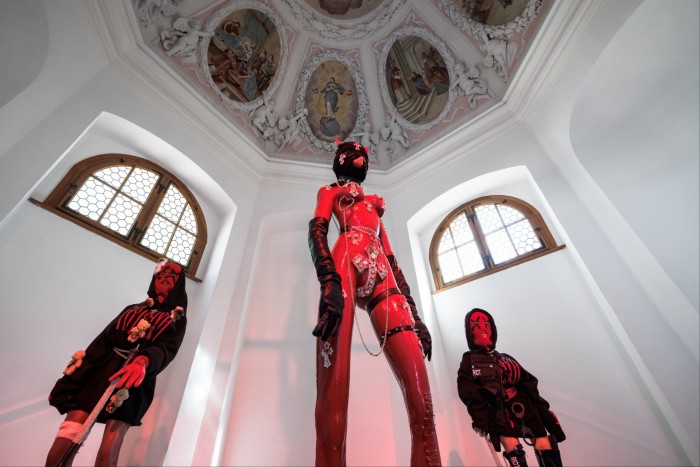
It was during her own time in prison that Tolokonnikova developed an interest in the Eastern Orthodox religion. “I was reading the Bible a lot because I didn’t have access to any other philosophical works,” she says — adding that most of the books in the prison library were romances, in which she had no interest.
There are many aspects of Eastern Orthodoxy she dislikes, including its marginalisation of women, but she notes that religion has helped underpin her activism. “If you live in a totally materialistic world without a metaphysical or spiritual dimension, it’s much more difficult to justify sacrifices that you have to make along the way,” she says.
These sacrifices are evident in the second part of the exhibition, located upstairs. Here, Tolokonnikova has replicated her old cell: two wooden planks chained to the wall that function as beds, a table, a chair and a small set of drawers. All are framed by a wall painted as close to the prison’s “ugly poop colour” as the museum staff could get.
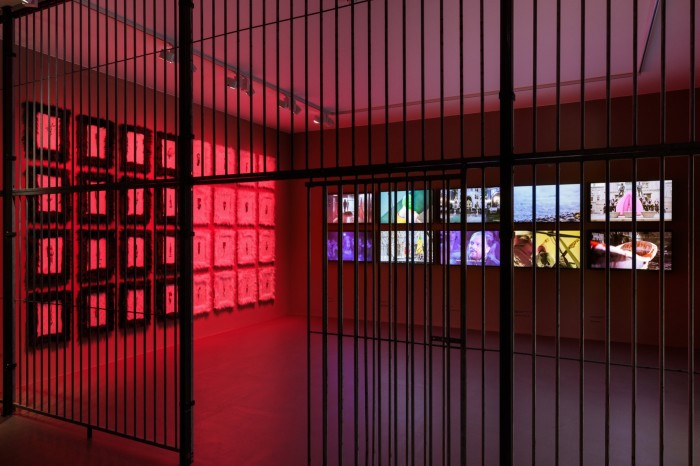
The same room also contains memorabilia from her time behind bars. Alongside notes and letters and the statement she wrote when she staged a hunger strike are photos of her daughter Gera, who turned four in 2012, around the time Tolokonnikova was arrested and Putin was re-elected for his third term as president. A newspaper with Putin’s face on the front page and a short item about Pussy Riot’s arrest lies near one of her daughter’s pencil drawings of a hippo.
From the vantage point of the chair in the replica cell, visitors can see the other side of the room through steel bars. There screens play videos of Pussy Riot musical projects and protests, including one staged during the 2014 Sochi Winter Olympics, when the members were attacked by militiamen wielding whips and tear gas.
During that time, Tolokonnikova says, she lived in constant fear. “People would just pass by and punch us or throw antiseptic in our face,” she says. “I had panic attacks on the subway.”
This ever-present fear is palpable in another work, “Damocles Blade”, in which an enormous metal knife with a furry red handle and a pointed tip hangs from the glass ceiling in a third room. Much like stained glass or large-scale murals in churches, it draws the eyes upwards, towards the light — a symbol of violence and, simultaneously, of hope.
“Any oppressive authoritarian government is a double-edged sword,” Tolokonnikova says. “It’s a danger for us activists, for people who end up in jail. But there’s also danger for the dictator. Putin has surrounded himself with enemies and is creating more enemies daily.”
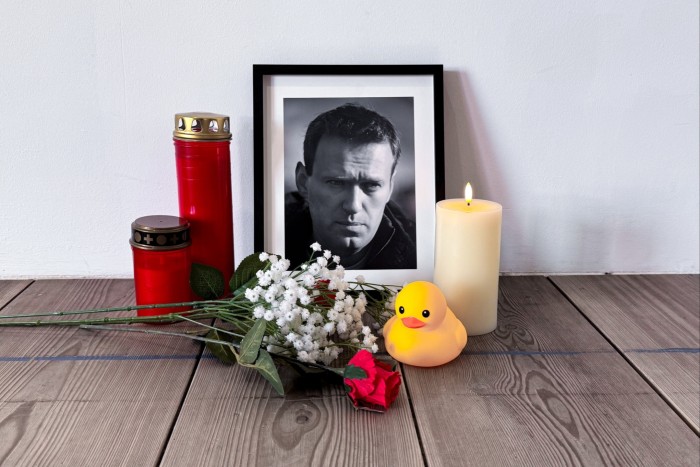
The blade is part of an ode to Alexei Navalny, the Russian opposition activist who died in an Arctic penal colony in Russia in February. Next to it, three long velvet banners hang on the wall, covered in writing arranged in the shape of crosses. The words are made up of one phrase, repeated over and over: “Love is stronger than death.”
To October 20, ooekultur.at
Find out about our latest stories first — follow FT Weekend on Instagram and X, and subscribe to our podcast Life & Art wherever you listen